The best TV shows streaming for free

Streaming libraries expand and contract. Algorithms are imperfect. Those damn thumbnail images are always changing. But you know what you can always rely on? The expert opinions and knowledgeable commentary of The A.V. Club. That’s why we’re scouring both the menus of the most popular services and our own archives to bring you these guides to the best viewing options, broken down by streamer, medium, and genre. Want to know why we’re so keen on a particular show? Click the links for some in-depth coverage from The A.V. Club’s past. And be sure to check back often, because we’ll be adding more recommendations as shows come and go.
With the acknowledgement that many viewers seek out streaming options to avoid commercials: Thanks to the likes of CW Seed and Peacock, there’s a bounty of great TV awaiting anyone with a broadband connection and a tolerance for the occasional ad. And we’re not just talking the frustrating tease of Crackle carrying the first two seasons (and only the first two seasons) of NewsRadio, either: After Mad Men left Netflix, it found a new home on IMDB TV—and that’s a case where pausing for a word from the sponsor just feels right, doesn’t it?
That show and many other TV classics are just a click away. But if you’d prefer to keep Madison Avenue out of your feeds, there’s always our guides to the best shows on Netflix and Hulu.
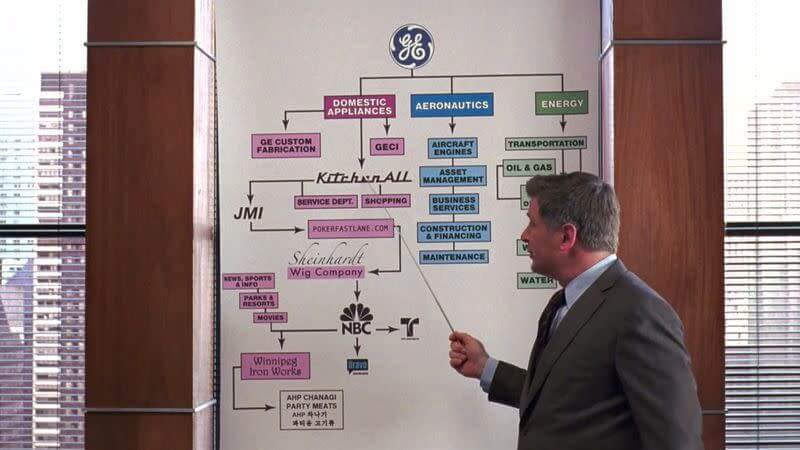
The further away television gets from 30 Rock’s time on the air, the more prescient the sitcom becomes—especially when it comes to all things NBC. Which is maybe the last thing anyone would’ve thought when it first premiered, compared to the series that was supposed to succeed, Aaron Sorkin’s funny-for-the-wrong-reasons Studio 60 On The Sunset Strip. However, Tina Fey’s absurd and quick-witted comedy lasted for seven seasons, created a television legacy, and spawned a comedic style and sensibility that made shows like and (the woefully underrated) work. It also left us with the greatest life advice possible: “Never follow a hippie to a second location.” [] (Streaming on )
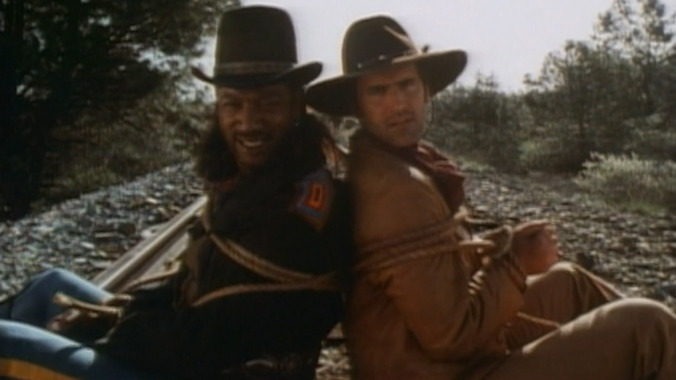
Eponymous bounty hunter Brisco County Jr. was written to be a Harvard lawyer, an amazingly quick draw, a terrific rider (with a super smart horse), and an impressively forward thinker. In addition to tracking down the men who killed his father, and learning the secrets of a mysterious, rod-studded object known only as “The Orb,” Brisco was also intent on finding “The Coming Thing”—new technologies and advances as the country edged closer to the dawn of the 20th century. Throughout the series’ short run, he and others stumble over anachronistic inventions that foreshadowed innovations soon to come, and Brisco’s response is nearly always the same: wry wit with just a hint of wonder.It’s a combination which could’ve easily proved insufferable without the right actor in the role. In the early ’90s, Bruce Campbell was still firmly locked in his “beloved actor, small cult” niche; his most prominent role remained his starring turn in the Evil Dead movies (the third of which, Army Of Darkness, came out in 1992, the year before Brisco County, Jr. debuted), along with a handful of parts in low-budget cult pictures, none of which left much of a mark. A starring role in an ongoing series meant a potential rise in prominence, and when it came time to audition, the actor went all out, going so far as to do a standing backflip to demonstrate his commitment to physical performance. [] (Streaming on )

Alfred Hitchcock Presents is the other classic anthology series from the early days of television. Polling friends on favorite episodes of the show often reveals answers episodes of The Twilight Zone. The story about the “” is often mistakenly associated with Hitchcock, perhaps because it’s so darkly comic and The Twilight Zone rarely did comedy well.But Hitchcock can claim to be the most successful anthology series in TV history. It ran from 1955 to 1965, longer than any other weekly primetime series in the genre, aside from a few play-of-the-week prestige projects from the earliest days of the medium. It was far more popular than The Twilight Zone, hitting the Nielsen Top 10 in its second season—helped, to be fair, by airing on Sundays, the biggest TV night of the week. That was when it was part of a CBS lineup that included such wholesome programs as Lassie and The Ed Sullivan Show, which makes it all the more impressive that it was one of the nastiest shows to go out over the airwaves in the 1950s.Alfred Hitchcock Presents is versatile in tone and subject matter, but its most common theme is how rotten seemingly respectable people can be. As Hitchcock explained when welcoming viewers back to the show one autumn, “When crime is occasionally dealt with [on this show], it will be crime as practiced by ordinary people, like the fellow next door. I think that, by spring, a large number of you will be thinking of moving.” [] (Streaming on )
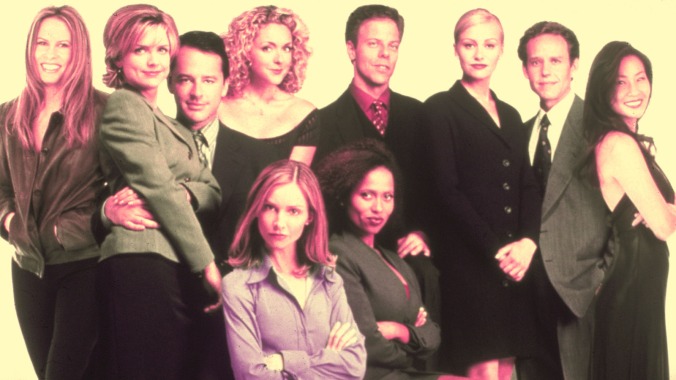
Former lawyer David E. Kelley—who already had Chicago Hope and The Practice on his plate—was tasked by Fox with creating a show about beautiful, successful people. To his credit, Ally McBeal turned out to be more than Melrose Place: The Corporate Years, casting New York stage actress Calista Flockhart as the young associate who goes to work at the Boston law firm of Cage And Fish, where she encounters the lost love of her life, Billy Thomas (Gil Bellows). Kelley realized his show’s early promise by turning Ally into a Walter Mitty of sorts: Bizarre, fantastical asides punctuated the show’s concepts and offered striking visuals not seen on other shows of the time. When Ally learns that Billy is married, she’s hit in the heart with arrows. When Billy suggests coffee, she pictures them frolicking naked in a giant coffee cup. When she tells us in voice-over narration (a device that gained ubiquity on network comedies in Ally McBeal’s wake) that she always feels like a little kid in client meetings, she’s then shown as a child, swinging her legs in a giant chair. [](Streaming on )
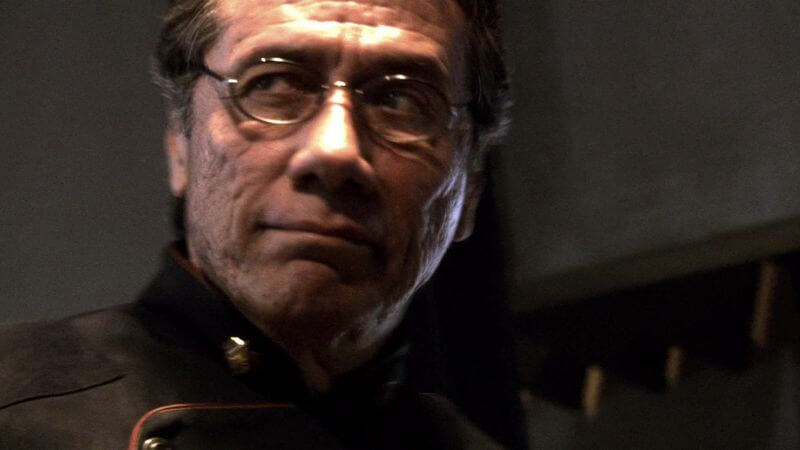
From our list of the best TV series of the 2000s:In traditional narratives, escape from disaster is about trying to return to the old life as quickly as possible. Once the worst has happened, rebuilding what was lost becomes the survivors’ main goal. That’s nominally the goal of the miserable remnants of humanity left in , but one of the series’ most effectively subversive elements is how it questions just what it means to “rebuild.” In a more traditional show, humanity’s leaders (Edward James Olmos and Mary McDonnell) would’ve guided Jamie Bamber, James Callis, Katee Sackhoff and the rest to some haven where they could take cover and eventually defeat the Cylon race bent on exterminating them. Instead, creator Ronald Moore gave audiences the fumbling of two species bent on discovering grace, with all the confusion and terror that implies. The show’s often-tortured mythology doesn’t always work, especially in a final season that tried too hard to tie up threads that weren’t loose so much as irrelevant. But the end result is still a powerful meditation on grief, loss, and the responsibilities of consciousness.(Streaming on )
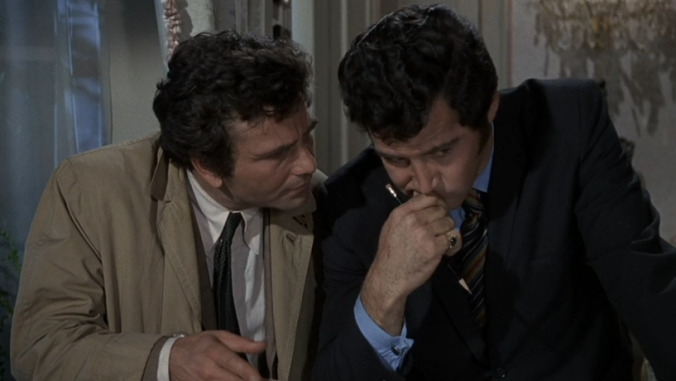
Peter Falk stars as Columbo, a Los Angeles homicide detective who always gets his man. (Or woman.) Debuting in 1971 and airing intermittently until 2003, Columbo hinges on a still-novel concept: Each episode starts off following a potential killer and their victim, watching the lead up to the crime and often the murder itself. Instead of a mystery focusing on the identity of the villain, the show focuses its attention on Columbo’s patient, dogged pursuit of justice, and the ways that pursuit routinely brings him into contact with a wealthy elite who consider themselves above the law. With no recurring characters beyond its titular hero, Columbo could almost be called an anthology series, were it not for its surprisingly consistent structure. Someone thinks they can take matters into their own hands; then a friendly, shabby little man shows up and teaches them the error of their ways.As procedural fans can tell you, a consistent structure can be as satisfying as a relentlessly inventive one; the familiarity provides a reliable source of comfort, offering drama without any serious threat of shock. But Columbo finds plenty of ways to surprise and innovative with the limits of its model, with inventive camera work, clever, well-considered scripts, and an attention to unexpected detail. But really, it’s Falk and the fundamental decency he conveys on-screen that make the show such a reliable treat. Unlike other detectives who get by on antihero theatrics, Columbo’s level-headed determination is reassuring precisely because it presumes that justice is an inevitably, provided you make the time for it. [](Streaming on and )
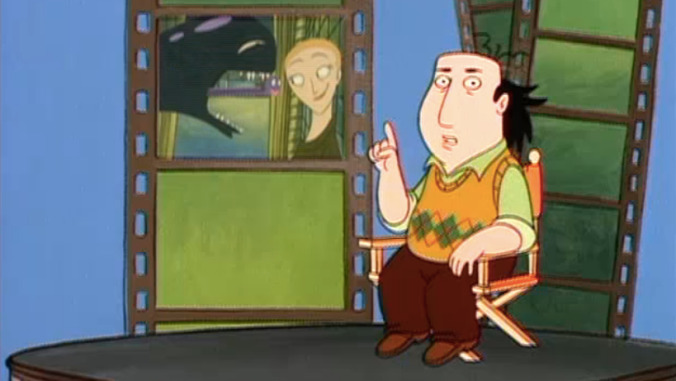
Often mistaken for a direct spinoff of The Simpsons—and both embraced and spurned for it— took two of that show’s most successful writer-producers, Al Jean and Mike Reiss, its beloved guest actor Jon Lovitz, and its pop-savvy satire, yet spun something entirely new out of them. Unlike Homer Simpson, Lovitz’s film reviewer Jay Sherman was envisioned as an unlovable loser: a snooty Manhattanite who cultivated an incredibly high opinion of himself, yet craved the love of the same uncultured TV viewers he derided. Needless to say, ABC audiences who’d just finished watching Home Improvement never warmed to it, while even Fox’s Simpsons fans received Jay with as much hospitality as Homer did in their crossover episode. But time has been kind to The Critic, whose format was ideal for the sort of quick-cut movie spoofs that can live well beyond their original context (and which, for better or worse, led to the similarly structured Family Guy). Newcomers may also be surprised to discover that Jay actually becomes a surprisingly sympathetic character through his constant humiliations yet plucky resolve, which creates the same affection for him as original viewers had for his perpetually endangered show. [](Streaming on )
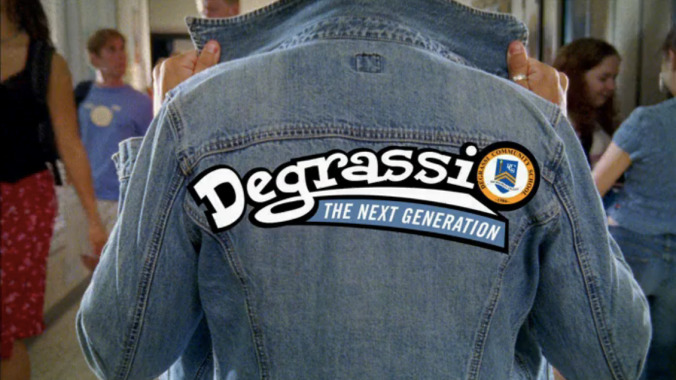
Degrassi may have tweaked itself slightly over time—a brief exploration of the telenovela model, a couple of years where the students wore uniforms, the introduction of “new” media—but its core has always been the same. It’s a show about teenagers dealing with teenage problems. There are capitalized “Problems” like having an abortion, gender identity, and facing your date rapist in court; lowercase problems like an innocent crush on a teacher, trying to get tickets to a concert, and keeping your LARPing hobby a secret; and impossible-to-categorize problems like finding your , or , or . Say what you will about Degrassi, but it leaves no stone unturned: One episode featured while another focused on ; one character while another . [](Streaming on IMDB TV)

Forty-five years before Tina Fey’s 30 Rock, series creator Carl Reiner used his experiences as a writer-performer on Your Show Of Shows for the basis of the most sophisticated situation comedy of its day. For five seasons, beginning in 1961, Rob Petrie (Dick Van Dyke) brainstormed with his fellow writers over the script of the next Alan Brady Show, braved the raging tantrums of his fire-breathing boss (played by Reiner himself), then came home to the suburban Eden presided over by his ex-dancer wife, Laura (Mary Tyler Moore). The first great upper-middle-class sitcom, The Dick Van Dyke Show still feels fresh, thanks to smart writing and the talent and teamwork of a perfectly balanced cast of young up-and-comers and hammy old pros. The chemistry between Van Dyke and Moore set the standard for later sitcom couples: They were probably the first husband and wife on a TV comedy who were really sexy together. [](Streaming on IMDB TV)
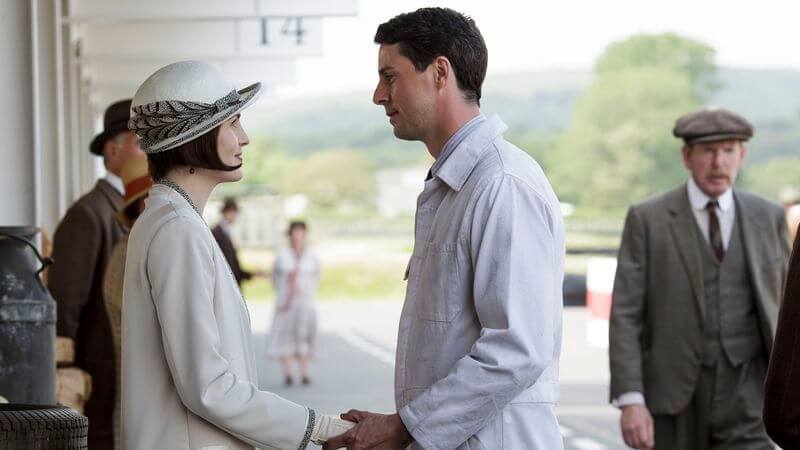
The Mad Men of the 1910s, is an immaculately constructed period drama that follows the lives of a rich noble family tasked with maintaining an abbey and the lives of its many maids/butlers. During the show’s excellent first season, it’s often impossible to tell who has it worse. The dire search for a suitable abbey heir is just as important and pressing as a servant-driven plot to oust a perfectly friendly worker. One of the noble daughters bonds with a maid, while another scoffs at those below her, and the maid is punished for not knowing her place. Like Mad Men, the series embeds itself into a specific time and place so deeply that the accompanying aesthetic feels both completely alien and hauntingly familiar. [](Streaming on )

In this autobiographical sitcom from Chris Rock, Rock’s fictionalized self is played by Tyler James Williams in a breakout performance. In the roles of Rock’s flawed parents, Terry Crews and Tichina Arnold set new standards for a TV dad and mom. But as put-upon as the eponymous character might be, Everybody Hates Chris is groundbreaking for its portrayal of a Black family whose lives aren’t just defined by their struggles. [](Streaming on ,
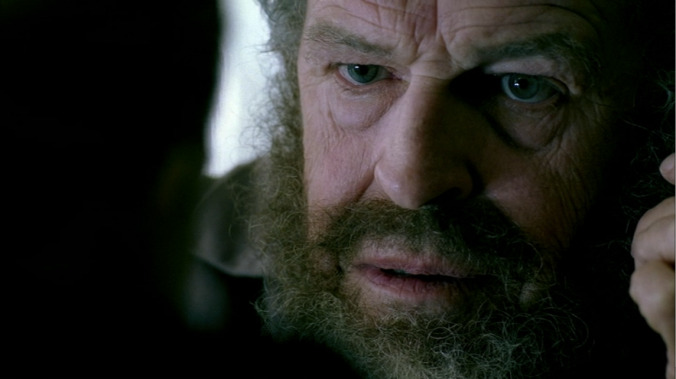
Originally hyped as the possible successor to the zeitgeist-capturing science-fiction adventure Lost, instead ended its run in 2013 as an under-watched cult favorite, with its own, more esoteric take on the “mad scientist” genre. With its mind-bending, heartbreaking, dimension-hopping storylines—and with its colorful, multilayered performances by John Noble, Anna Torv, and Joshua Jackson—Fringe today remains a rare gem, still waiting to be unearthed by millions of potential viewers. [](Streaming on IMDB TV)

Nominally a show about high-school football teams, Jason Katims’ beloved adaptation of Friday Night Lights used the Dillon Panthers and East Dillon Lions as gateways to explore all the lives lived within a small West Texas town—all the dreams and setbacks and heartbreak of its residents. The simple drama of the everyday ascended to an epic level for the players, coaches, and residents of Dillon, the stage of the football field frequently the only place where anything in life made sense to any of them. And on a day where family is important, there’s no better family to look to for inspiration than Eric and Tami Taylor, played to perfection by Kyle Chandler and Connie Britton. [](Streaming on and )
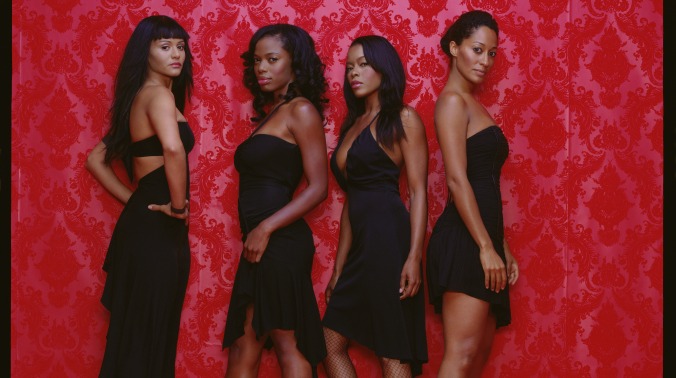
Merely hearing the word Girlfriends still conjures up Angie Stone’s soulful voice and the image of four Black best friends living life in Los Angeles. Joan (Tracee Ellis Ross), the uptight attorney who dreamed of wearing a white dress. Maya (Golden Brooks), the working-class wife and mother turned “authoress.” Lynn (Persia White), the sexually-free freeloader. And Toni (Jill Marie Jones), the bourgeoisie real estate broker from Fresno. These four characters made up the friendship core of the legendary sitcom for several seasons.Series creator Mara Brock Akil, who’d gotten her start writing on shows like South Central, Moesha, and The Jamie Foxx Show, was disheartened by the in shows like and . , another iconic show created by, for, and about Black women, had ended in 1998, leaving a void in television representation just waiting to be filled. Insert Brock Akil, who teamed up with actor and producer Kelsey Grammer to do just that. The goal of the half-hour comedy, which debuted 20 years ago next month, was simple: to give Black women a seat at the table.Along with its iconic theme song, Girlfriends is continuously celebrated for its accurate and relatable portrayal of Black women. This distinction is thanks to Brock Akil and her writer’s room that consisted mostly of Black women approaching Girlfriends almost like “a documentary of our experiences,” tackling everything from colorism and AIDS to domestic violence and cultural appropriation. Despite the humor and at times absurdity rampant throughout the series, Girlfriends avoided trivializing any of these issues. At the core of everything was friendship—just four Black women from different socio-economic backgrounds facing life’s triumphs and challenges together. Well, four Black women and their honorary “girlfriend,” the corny, yet lovable lawyer William (Reggie Hayes). [](Streaming on )
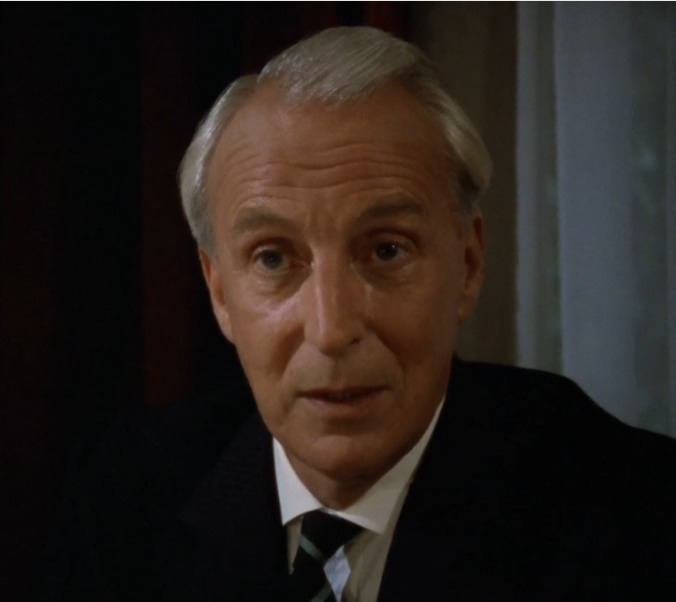
In the wake of Margaret Thatcher’s resignation, veteran Conservative MP Francis Urquhart (Ian Richardson) plots to destroy his rivals and enemies while rising to fill the leadership vacuum. His methods include seducing a tabloid reporter and killing one of his pawns by poisoning his cocaine. (Urquhart’s story, which starts in the four-part miniseries House Of Cards, is continued in the sequels To Play The King and The Final Cut.)This series provided the inspiration for the , but the British series is superior in every way: wittier, more daring, more satirically sophisticated, and with a magnetic, regally icy performance from Richardson that leaves Spacey eating dust. The U.K. version just makes it all look easy, in marked contrast to the Netflix remake’s sweaty desperation to appear sufficiently ruthless and cutting edge. []
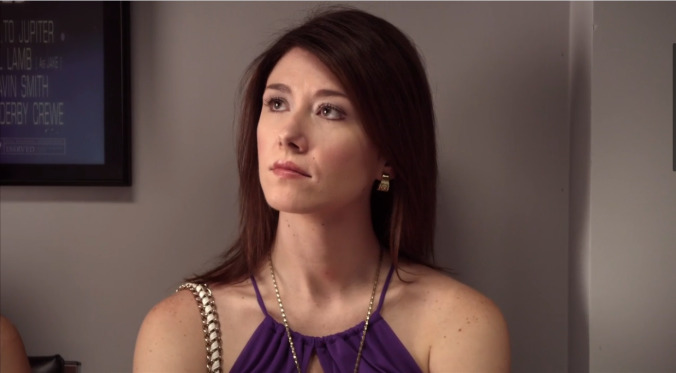
From our “” coverage of 2012’s best TV:The best show no one watched this year was this plucky Canadian import revolving around a group of young adults trying to make it big in Los Angeles. Smart, funny, and twisted, with a wry gaze on the way the Hollywood machine indiscriminately churns up everything in its path, The L.A. Complex was best when it was illustrating how everything gets turned on its head once a hint of fame gets involved.(Steaming on )
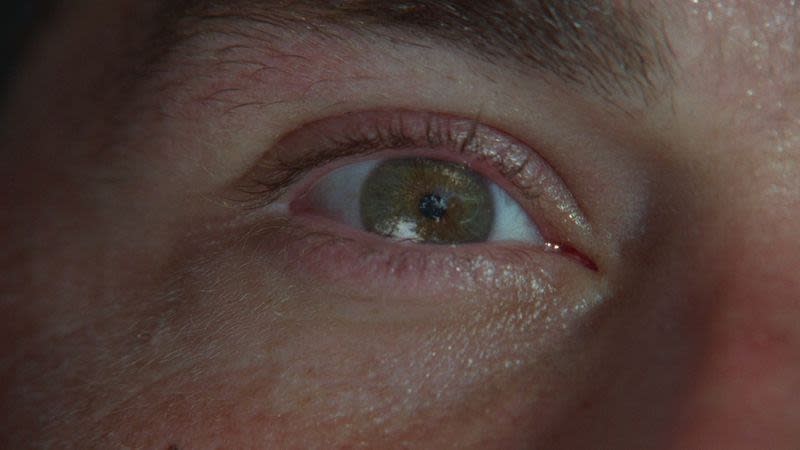
:No series risked more over the past decade than Lost, which has asked its viewers to be patient as the show’s creators have withheld information, killed characters, divided the cast and—in the ultimate potential deal-breaker—toyed with time travel. To some extent, frustration with Lost has become part of the pleasure of watching the show, as fans gather to grumble about dangling plot threads and conflicts that could be easily resolved if characters ever used some of the time they’re spending cast away on a desert island to, y’know, have conversations. But Lost’s payoffs have been well worth its head-slappers. Showrunners Damon Lindelof and Carlton Cuse have presided over a story that’s spanned continents and genres, all while crafting a dense mythology with a human core. Lost is a show about unexpected connections and the search for meaning in our shared cultural arcana. It’s also been a showcase for a sprawling cast of memorable characters, each learning the lesson that if they’re patient enough to wait out the changes, their tragic life stories just might have a happy ending.(Streaming on )

Even in the “golden age” of television, stood apart: a deftly crafted look at mid-20th-century America through the fabricated lens of advertising. As Don Draper tells a group of clients at the start of the series: “Advertising is based on one thing: happiness.” Mad Men was filled with memorable characters, but it was Jon Hamm’s duplicitous Draper who kept us fully enraptured as the series entered its still-superlative second half. The show slyly unspooled insightful revelations on big-picture concepts like identity, success, and yes, happiness. Before Mad Men, TV seemed like something to watch; with Mad Men, TV became something to think about and examine, as we all wrestle with our interior Dick Whitmans, presenting our Don Drapers to the world. [](Streaming on )
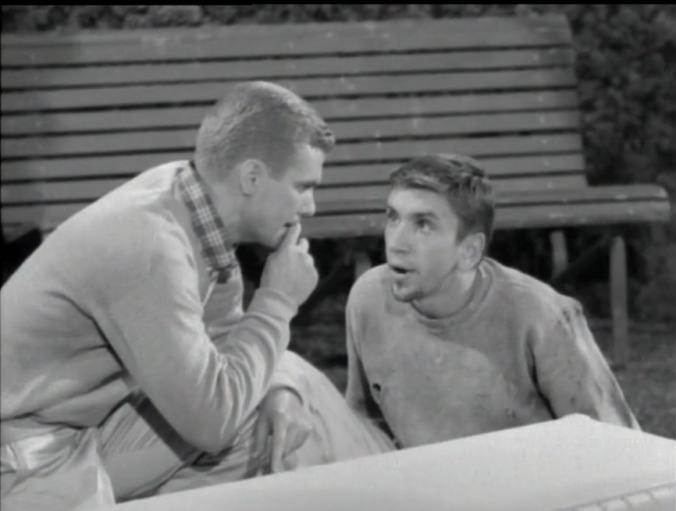
Quoth the theme song: “Dobie wants a little cutie / Dobie wants a little beauty / Dobie wants a gal to call his own.” Dwayne Hickman plays the eponymous lover boy, a TV everyman for the ages who busted down the fourth wall nearly three decades before Ferris Bueller invited moviegoers to play hooky. Eternally at his side are the characters who’d eventually upstage the program’s nominal star: unshaven jazzbo Maynard G. Krebs (Bob Denver) and the one girl who’ll give Dobie the time of day, pesky know-it-all Zelda Gilroy (Sheila James Kuehl). Max Shulman didn’t invent the myth of the American teenager when he introduced Dobie in a series of short stories. Still, the TV series based on those stories went a long way toward defining the type: heartsick, strapped for cash, and so willing to find an identity that they’d join the army for the better part of a season. Dobie also portrays the adolescence of the TV sitcom, indulging in flights of fancy that move away from the stage-bound realism of ’50s comedies without lapsing into the full-blown fantasies that defined the genre in the ’60s. It’s no longer considered daring to feature a beatnik in primetime, but the playfulness of Dobie Gillis keeps the show vital as ever. [](Streaming on )
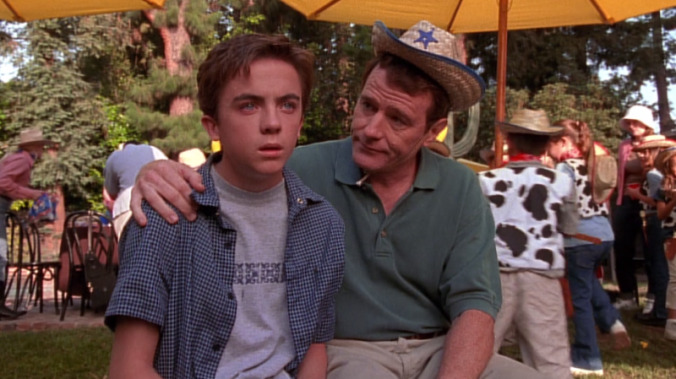
Malcolm In The Middle shares a lot of characteristics with The Simpsons. It’s about a lower middle class family with three children at home (the eldest a trouble-maker, the middle brilliant), a childlike and emotional father, and a mother who has to take on the role of authority figure. While it’s live action, it also has a cartoonish sensibility: comedic set pieces, throwaway gags, and crazy situations are often around the corner. Yet for all that wackiness, Malcolm and The Simpsons have another important trait in common: Both are grounded in a family that feels real. This dynamic of overblown storytelling and human character proved remarkably durable for Malcolm In The Middle and allowed the show to keep rolling along for 151 episodes. [](Streaming on )
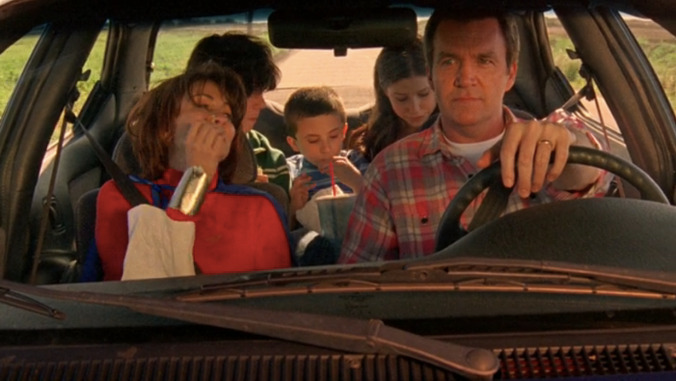
When The Middle first arrived on ABC in the fall of 2009, the two biggest things the series had going for it were its leads: Patricia Heaton, returning to the familiar groove of a family-oriented sitcom (her previous endeavor, FOX’s Back To You, teamed her with Kelsey Grammer, the pair of them playing local news anchors in Pittsburgh), and , finally getting a chance to play someone other than the janitor on Scrubs. Also important, if not as immediately known to viewers, was that the series’ creators, DeAnn Heline and Eileen Heisler, came with a major cache of comedy credits to their names, including Kate And Allie, Doogie Howser, M.D., and Murphy Brown. What proved to be the most valuable experience in their back catalog, however, was the time the duo spent working on Roseanne, a show that managed to find humor in the struggle to make ends meet.Frankie and Mike Heck, the characters played by Heaton and Flynn on The Middle, are definitely cut from the same mold as Dan and Roseanne Conner. Mike’s a blue-collar guy who goes to work, gets paid, comes home, and enjoys life’s simple pleasures when he’s not being annoyed by his kids. Frankie tries to be the best mom she can, but she also has a full-time job, which means that she gets just as annoyed by the kids as Mike does. Still, they do their best, although it’s sometimes a struggle to deal with the disparate personalities of their daughter and two sons. [](Streaming on )
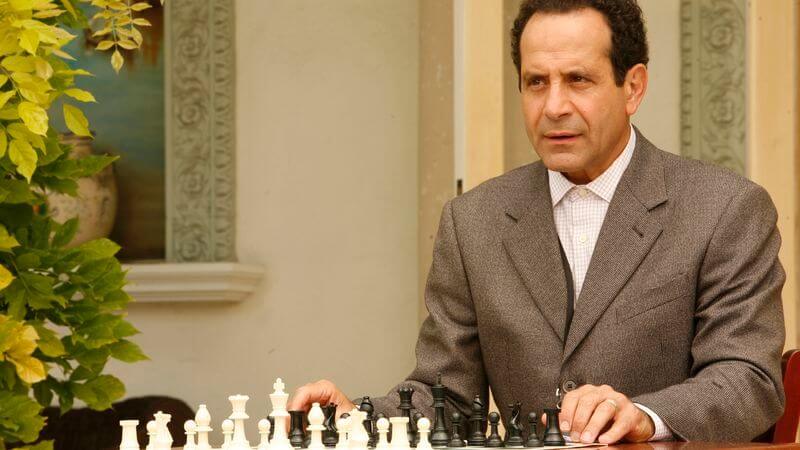
Monk, USA’s comedy-procedural about a detective with OCD, was originally conceived by ABC executives as a show about a Clouseau-like buffoon starring Michael Richards. Richards passed, and ABC handed it over to USA. Then SNL alum Andy Breckman was brought in, and he turned to Holmes as an inspiration. He created the character of Adrian Monk (superbly played by Tony Shalhoub) and surrounded the detective with a Watson-like nurse, Sharona (Bitty Schram) and a Lestrade equivalent, Police Captain Stottlemeyer (Ted Levine). Dimwitted Lieutenant Disher (Jason Gray-Stanford) rounds out the main ensemble.While Monk shares many of the qualities of his fellow sleuths—narcissism, a strong sense of justice, uncanny deductions—he lacks any of their coolness. Monk too can be offputtingly square at first glance, with its goofy sense of humor and preoccupation with puzzles. The macho aspects of Sherlock Holmes, his boxing background and occasional cocaine use, are gone. What remains is a fragile and lonely genius. Monk is the cowardly lion of the sleuthing set, terrified of everything from germs and heights to ladybugs and milk. [Matt Crowley](Streaming on )

For 12 blissful seasons, Jessica Fletcher (Angela Lansbury) was the best amateur investigator on television, a charming widow and generous neighbor with boundless energy and a knack for stumbling into murder cases. When a mystery novel she wrote, just to amuse herself, gets published, she becomes a minor celebrity, though never turning her back on her family and neighbors, nor leaving the small town of Cabot Cove, Maine. Her success sends her across the country, where she inevitably (and almost immediately) earns the trust of local law enforcement through her considerable skill for deductive reason and good old-fashioned persistence. Though there are a few recurring characters—most notably Jerry Orbach’s Harry McGraw, who earned his own ill-fated spin-off—this is Lansbury’s house, and the role earned her 12 Emmy nominations (though not one win).There’s a refreshing simplicity to the homicides of Murder, She Wrote and the means by which they’re solved. There’s never much in the way of sturm und drang, even when a suspect’s lover or spouse is involved. While there’s certainly plenty of suspense, the characters are rarely vulgar, the crimes almost never horrific, and only occasionally does Jessica fear for her safety. It’s all very civilized and oddly compassionate, making it the perfect series to binge when stress (and distress) aren’t welcome companions. [] (Streaming on , )
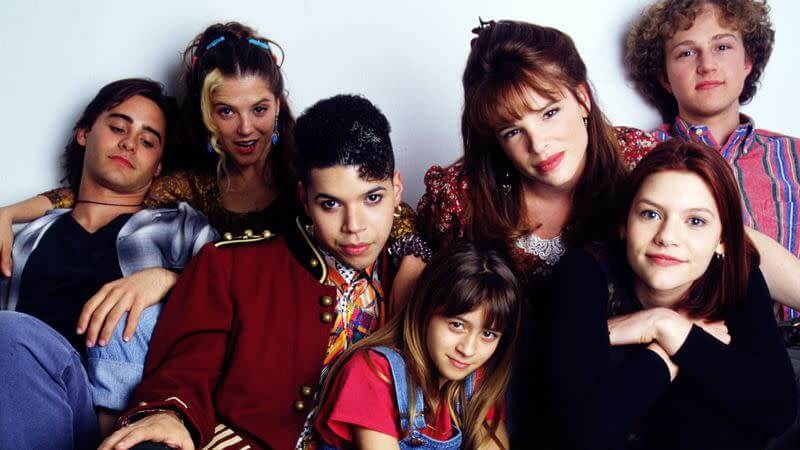
There have been plenty of standout shows about teenagers since the saga of Angela Chase died a much-mourned death after one season, but they’ve couched their stories in soapy excess (The O.C.) or genre trappings ( and ). Even the shows that come close to Life’s beauty and earnestness deflect from those moments ever so slightly with the use of cringe comedy () or by focusing more on adult characters than teens (). My So-Called Life felt utterly and completely unique when it aired, and it feels utterly and completely unique now; if this show somehow found its way onto the schedule in the fall of 2014, it would almost certainly be just as hailed as it was in 1994, and it would almost certainly feel as fresh as it did then. It is an oasis in the history of television, but like all oases, its presence was far too small. [](Streaming on IMDB TV)
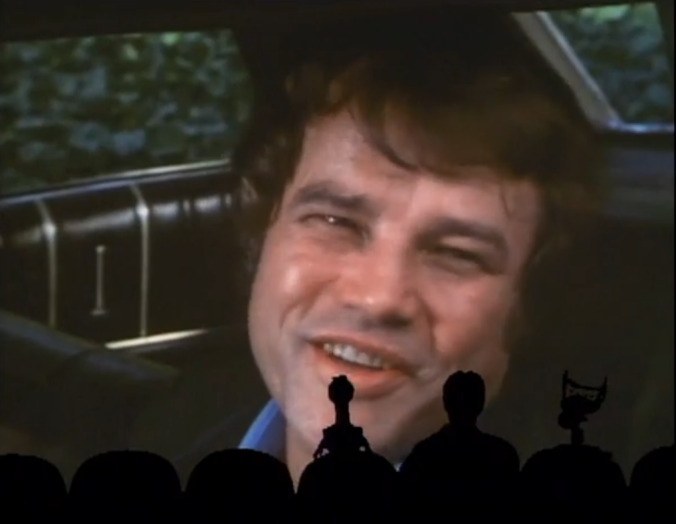
was the little cult show that could: After jumping from Minneapolis-based UHF station KTMA to fledgling network The Comedy Channel (which begat Comedy Central) in the late ’80s, it survived a 1996 cancellation to be reborn on the Sci-Fi Channel—where the crew of the Satellite Of Love maintained the series’ stellar movie-mocking ways—before being conclusively knocked out of orbit during the summer of 1999. Never a hit of Nielsens-shaking proportions, it nonetheless fostered a fervent fandom that helped catch up fresh converts to the MSTie way through online forums and a VHS-trading network that followed an entreaty included in the closing credits of early episodes: “Keep circulating the tapes.” [](Streaming on )
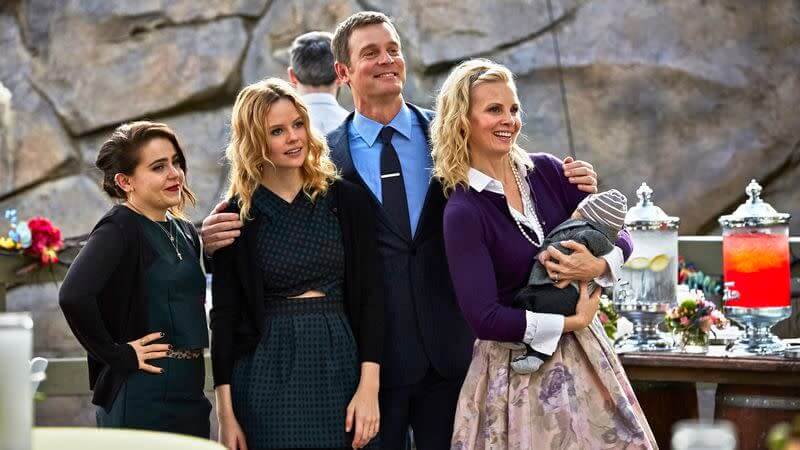
In a television landscape full of antiheroes, the Braverman family proudly flies the banner for the opposite side. is the rare family drama that gets better as it goes along, with the first half of season four sealing its place as one of the most touching hours on television. The show’s magic trick is consistently spinning storylines that could easily veer into after-school special territory into gripping, emotional, well-observed treatises on what it means to be part of a family—for better or for worse. [](Streaming on and )
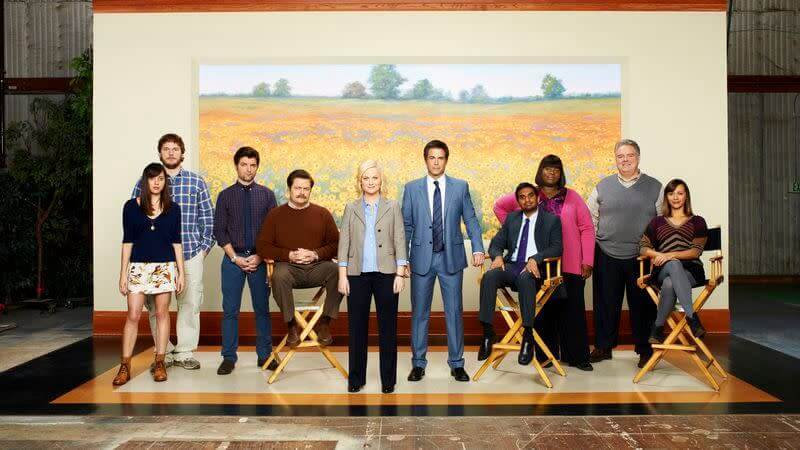
If the buildings of any modern sitcom setting have feelings, they’d be the ones in Pawnee. Like other great fictional TV towns—Springfield, Mayberry, Dillon, Stars Hollow—Pawnee is a vibrant, lived-in, and (in a manner of speaking) real setting. It has local haunts (JJ’s Diner, The Snakehole Lounge, Tommy’s Bistro), businesses (Sweetums, Kernston’s Rubber Nipples), heroes (miniature horse Li’l Sebastian, former Pawnee Central basketball phenom “Pistol” Pete Disellio), and ancestries (Sweetums owners the Newports, loosely connected hell-raisers the Lerpisses). It also has a history rich in chauvinism, superstition, and atrocities committed upon the people of the Wamapoke tribe. As initially presented on , Pawnee is a raccoon-infested microcosm of American ills, with an easily irritable populace and a big pit running alongside Sullivan Street. Leslie Knope aims to fill that pit, the gaping black hole where Pawnee’s heart should be.A cheerful package of civic pride and faith in government, Leslie Knope sprang forth from a project that was originally pitched as a spin-off of . Despite the early casting of one-time Office player Rashida Jones, and the involvement of Office personnel including showrunner Greg Daniels, writer Michael Schur, editor Dean Holland, and original casting director Allison Jones, Parks And Rec swiftly evolved into its own beast. Retaining the mockumentary format of their previous show, co-creators Daniels and Schur framed their new protagonist as a dogged civil servant with the headstrong blind-spots of a Michael Scott, but gave her a greater deal of intelligence and wherewithal, a characterization Amy Poehler wears like a second skin. [](Streaming on Peacock)
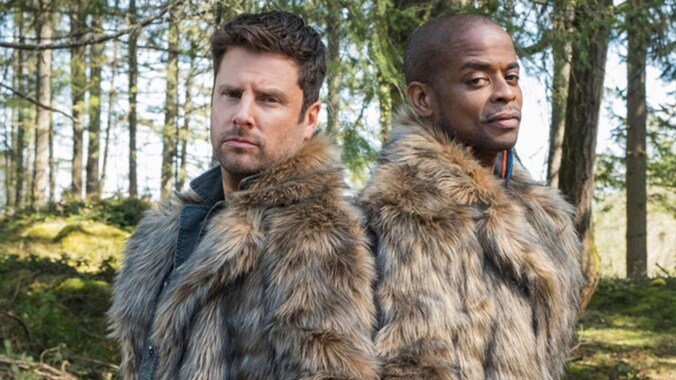
In the battle between authentic and fake psychics, the poseurs have a clear advantage. They coast on the bona fides of the real deal and link up with police precincts without suffering from any painful flashbacks from someone else’s life. But, they do have to produce results, otherwise they won’t be able to keep buying the pineapples and whatever fruit the fake psychic turned legit investigator enjoyed on CBS’ glossy Psych knockoff, The Mentalist. Luckily, Psych’s Shawn Spencer has an eidetic memory, extraordinary observational skills, and police training courtesy of his dad, which all come in handy. The Mentalist’s Patrick Jane, meanwhile, has a similar set of very particular skills, but assists a completely different law enforcement group. On their respective shows, Shawn and Patrick solve cases by making very educated guesses and recalling things that slip the minds of most murderers. It’s a career move so obvious that we watched it play out twice on TV. [](Streaming on )
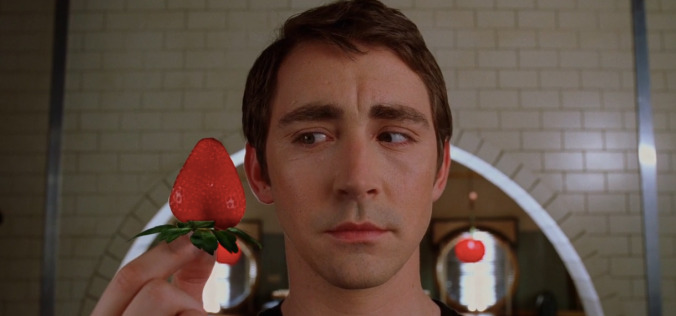
From :As someone who has tried to explain the premise of the show numerous times, I’m impressed with how much exposition the pilot is able to accomplish without losing momentum (at least some credit for that goes to Jim Dale, of the Harry Potter audiobooks, whose narration skills could make the phonebook riveting). The breezy-yet-morbid preface blazes through the convoluted situation of Ned (Lee Pace), who inexplicably has the ability to bring people back from the dead—but only for 60 seconds, or else someone dies in their place, and a second touch will instantly re-kill them. Following five minutes of Crayola-colored childhood trauma (two dead parents, lost puppy love, and an eyepatch-wearing Swoosie Kurtz), we’re brought to the present day, where Ned is stoically making pies and refusing to touch his once-dead dog, lest he send him packing back to doggy heaven. Oh, and he’s also helping private investigator Emerson Cod (Chi McBride) solve murders for the reward money, a task made significantly more straightforward thanks to Ned’s special ability. That is, until he reanimates his long-lost childhood sweetheart, girl-next-door Chuck (Anna Friel). [Genevieve Koski](Streaming on )
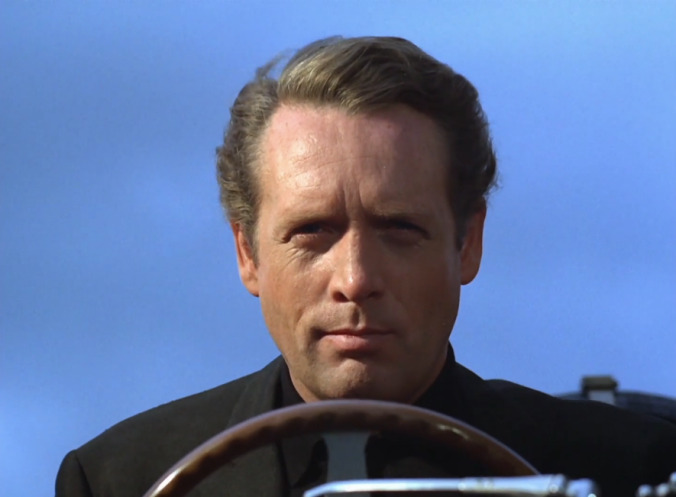
From our Primer on : If the super-spy genre can be said to have a logical end-point, it was reached in 1968 with the conclusion of Patrick McGoohan and George Markstein’s brilliant, frustrating ITV series . It’s the story of an unnamed super-spy (whom fans have thought for decades is meant to be Danger Man’s John Drake) who resigns over an unrevealed moral conflict with his superiors and gets banished to a mysterious island. An endless series of interrogators, always designated Number Two, attempt to get the hero—who is alternately enraged, animalistic, cooperative, and calculating—to explain why he resigned. Throughout the brief (17-episode) series, the people who run the island use drugs, flashbacks, seduction, torture, betrayal, and every other trick in the book to get McGoohan’s character to reveal a secret they probably already know. The moral struggle is thus subtly altered, and the entire dynamic of the spy genre is changed. It’s no longer about fighting the enemy, but determining who the enemy is. It’s no longer about who deserves your allegiance, but who owns your conscience. The Prisoner often floated adrift in genre clichés, and its surrealistic elements could be hokey instead of intriguing. The show was wildly inconsistent. But McGoohan was always magnificent, and The Prisoner took the spy genre as far as television has ever allowed it to go.(Streaming on )
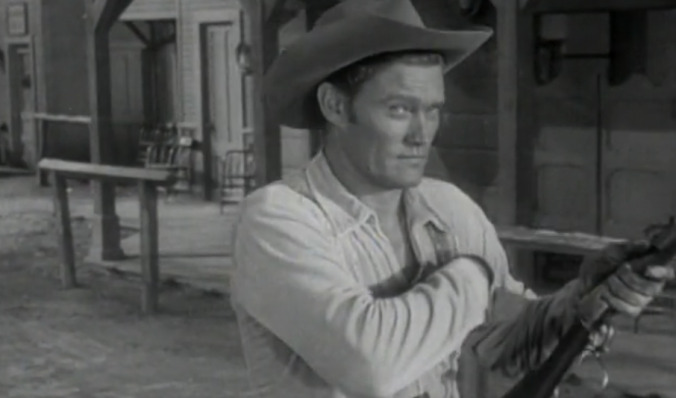
Even debuting at the height of the TV Western in the late ’50s, The Rifleman stands out. It isn’t about a marshal or a bounty hunter. It’s about a father, a Western with as much in common with the family sitcoms of the day as the adventures. Chuck Connors’ quick draw Lucas McCain tries to do the right thing, because of his son, not because of the law. Not even Nielsen hotshot Gunsmoke has as deep a bench of recurring townspeople, giving the show an unusually lived-in quality. That sense of not quite continuity, but consequence, fits right in with series developer Sam Peckinpah’s preoccupations with violence, power, and moral justice. And with about a third of the episodes directed by black-and-white trash-art stylist Joseph H. Lewis, The Rifleman has one hell of a kick. [](Streaming on and I)
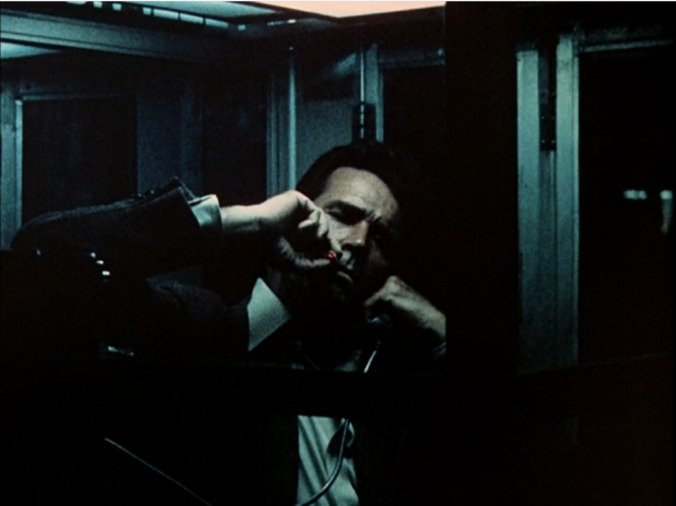
In the 1970s, no TV show pulled off the private eye sitcom quite as well as The Rockford Files. When the show debuted in 1974, James Garner’s Jim Rockford was the perfect stand-in for America, a country that was still trying to exit an extremely unpopular war and had recently seen its crooked president resign: He was world-weary, pessimistic, and sardonic, but still attempting to fight the good fight. TRF continued through the ’70s, featuring standard detective conventions like femme fatales, cop buddies, and old flames, while adding some key modern aspects like disillusion with authority. The show was also noteworthy as an early series created by the prolific Stephen J. Cannell and a training ground for many future creators of legendary television, including The Sopranos’ David Chase. [](Streaming on , )
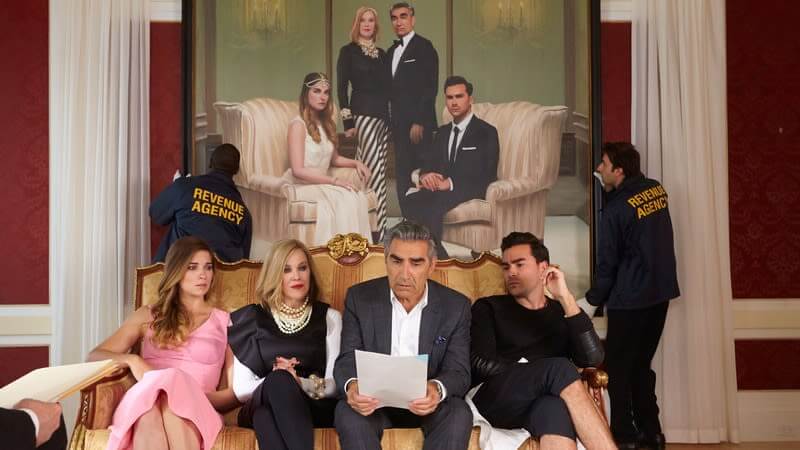
Eugene and Dan Levy’s fish-out-of-water sitcom deserves mention among the decade’s defining programs if only for where, when, why, and how it found an audience. A decorated hit in its native Canada, Schitt’s Creek was an object of cultish devotion in the States—until it hit Netflix, at which point anyone with an internet connection was saying, “Ew, David!” But it’s also in this conversation because it’s aged like a fine (Burt Herngeif? Irv Herb-blinger?) fruit wine, as the story of a wealthy family who lost everything (and the one town that had no choice but to keep them all together) expanded to encompass ever more idiosyncratic Catherine O’Hara enunciations, uproariously circular Rose family arguments, and more heart than any show with this title ought to have. [](Streaming on , IMDB TV)
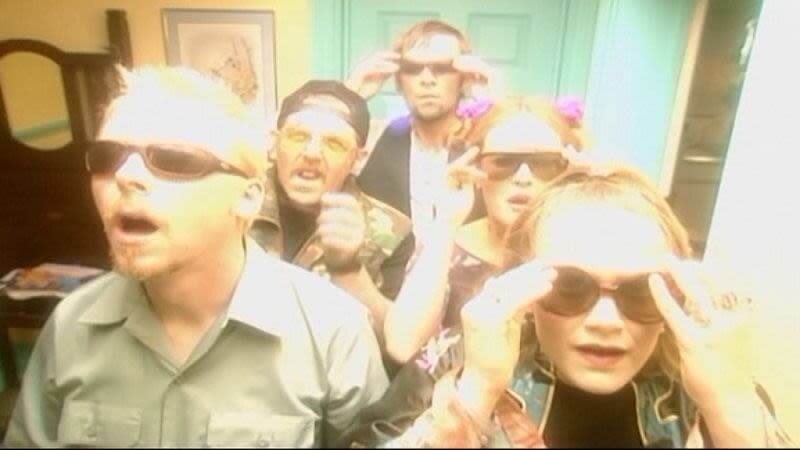
Comic-book artist Tim and freelance writer Daisy meet cute when she thinks he’s a weed dealer. They pose as a couple in order to rent their dream flat and have to navigate their relationship, a cast of misfit friends, and a conveyor belt of pop-culture references. The easy chemistry of writers and stars Simon Pegg and Jessica Hynes, with an assist from Nick Frost as Pegg’s gun-nut bestie, makes the perfect platform for the show’s running jokes, stunt cameos, pop-culture homages, and cutaway gags. (Style-wise, it’s essentially an intro course on the developing style of director , who would soon merge with Pegg and Frost to create an unstoppable nerd juggernaut). But while the usual sitcom elements are in play, there’s room for beats of earnestness, a refreshingly messy leading lady, and one of the best finger-gun fights in TV history. [](Streaming on )
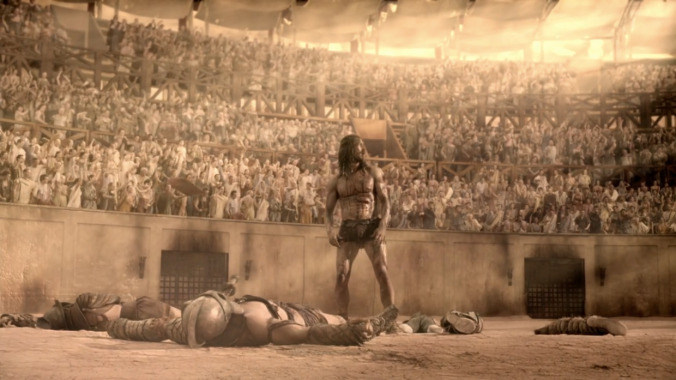
Early in the first episode of the Starz series : Blood And Sand, the eponymous hunk, in a tableau that looks torn from the cover of a romance novel, ties a ribbon around the leg of his comely wife before they’re separated by war and later sold into slavery. “Keep me close to your thighs,” says Spartacus, a line so ripe that it’s either a you-had-me-at-hello moment, or cause to reach for the remote. Though it fuses the stylized action of modern sword-and-sandal hits like Gladiator and 300 with the explicitness and behind-the-scenes treachery of HBO’s Rome, Spartacus: Blood And Sand amps up the luridness of its influences in every department. Call it trash, call it pre-Christian WWE, call it a guilty pleasure, call it whatever you like: This series makes a raw appeal to the senses, essentially converting its viewers into the cheering, lustful bread-and-circuses crowd that gathers to watch its gladiators battle to the death. It proves damned irresistible, which probably speaks poorly of us as a species. [](Streaming on )
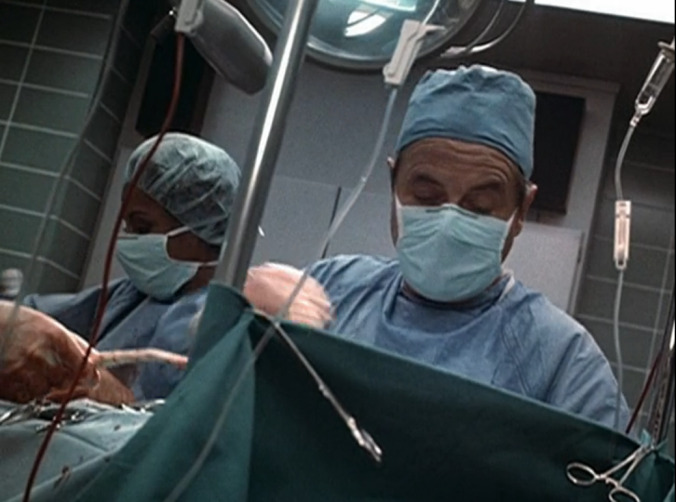
Hulu subscribers long had access to St. Elsewhere’s first season, but now that the show’s complete run is back in circulation (there and, er, elsewhere), you can more easily bear witness to the stranger paths traveled by the staff of crumbling St. Eligius, from the decade-spanning two-parter “Time Heals” (with Edward Herrmann as swing-loving hospital founder Father McCabe!) to the episode where the veteran docs decamp to Cheers to decompress over beers and Carla’s jeers. There’s plenty of compelling workplace drama and memorable characters (if you only know William Daniels as Boy Meets World’s Mr. Feeny, you must see his Emmy-winning turn as prickly heart surgeon Dr. Mark Craig) in between, but if you’re in it for the historic oddities, an episode that launched —after all the viewers it infuriated calmed down, at least. [](Streaming on )
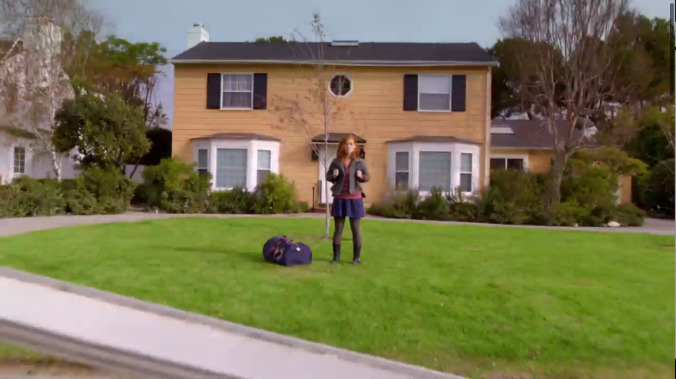
Like most new series, spent the first half of its freshman season establishing the rules and characters of its universe, painting former New York City girl Tessa Altman and her father, George, as oases of normalcy in the Stepford-esque town of Chatswin. As the show stepped into 2012, however, series creator Emily Kapnek and her writers began a remarkably successful creative tightrope walk, tugging at viewers’ heartstrings with various romantic storylines while still maintaining the cartoonish nature of many of the series’ characters. The intensity of Ana Gasteyer’s Sheila Shay remains as far off the charts as the cluelessness about the middle-class lifestyle displayed by Carly Chaikin’s Dalia Royce, but Suburgatory’s emotional punch is growing more powerful with every episode—thanks to hilarious yet moving developments like the introduction of Tessa’s mother, Alex (Malin Akerman), or the storylines that have emerged from Lisa (Allie Grant) learning that her brother Ryan (Parker Young) is adopted. [](Streaming on )

Just as disguises a survivor’s narrative in prehensile antennae and sniping among evildoers, had its own secret identity. It’s a low-concept high-concept sitcom, a super-Friends where the real action occurs during breaks from the action. The pilot, helmed by Men In Black director Barry Sonnenfeld, illustrates this brilliantly in the very first encounter between The Tick (Patrick Warburton) and his timid companion, Arthur (David Burke): Warburton clomps in and out of frame while the camera holds on Burke, who bobs and weaves to avoid flying henchmen and breakaway props. In DVD commentary, Sonnenfeld states that the scene originally called for more elaborate violence, but the production was running out of light, so they went with the lower-impact, jump-cut version. But the fight is so emblematic of the jokes that come after it, it’s hard to imagine the scene playing out any other way. It’s a 30-second dress rehearsal for a later installment, “The License,” that’s bookended by footage of the four primary heroes—The Tick, Arthur, Captain Liberty (Liz Vassey), and Batmanuel (Nestor Carbonell) emerging victorious from escapades only they’ll ever see. [](Streaming on )
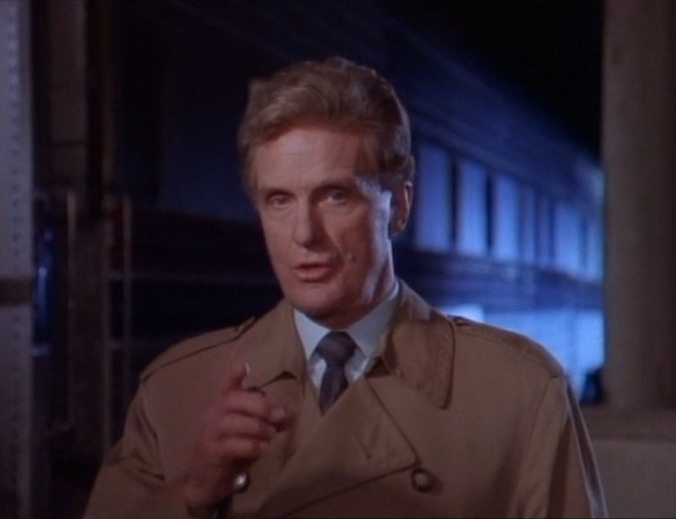
Though essentially a news magazine, Unsolved Mysteries was always forced to label itself as “not a news broadcast” because it was not produced by NBC’s news division. Though this could have initially been a hindrance to a program with hopes to be perceived as serious, it ended up giving the show more latitude to operate than it otherwise might have had, with host Robert Stack there to make sure the whole thing made some sort of sense, in terms of continuity. Indeed, Unsolved Mysteries was one of the earliest examples of a genre that would become hugely popular in the ’90s: infotainment. The series presented the gloss of learning something vital, but it was, essentially, all designed to slide by as easily and painlessly as possible. Yes, the program provided a hopefully vital service when chasing down criminals who had gotten away with something awful, but it also had an hour to fill every week. And that meant that the hour was filled out with mysteries that weren’t really mysteries (most often about people who had disappeared under not especially mysterious circumstances), weird legends and myths, and paranormal stories. The best Unsolved Mysteries episodes contained two or three actual mysteries the audience at home might be useful in solving, then one other segment meant to give the audience some interesting factoid to think about, like this segment about a supposedly mysterious staircase in Santa Fe, New Mexico. (In reality, the physics behind the staircase is easily explained.) [](Streaming on , IMDB TV, , and )
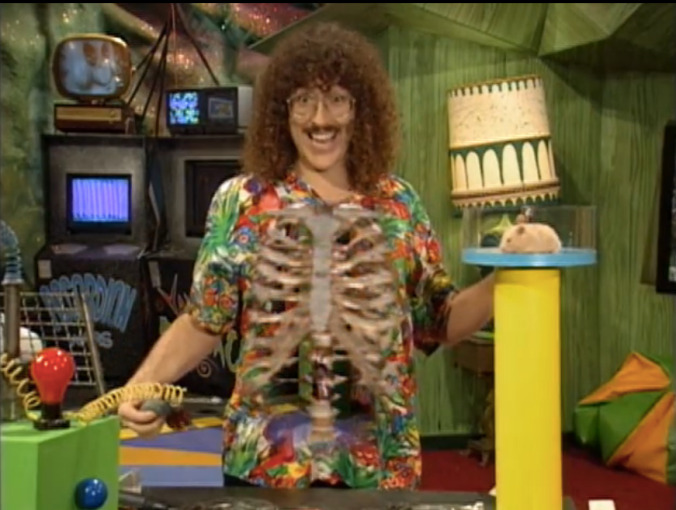
“Inspired” by Pee-wee’s Playhouse the same way Oasis may have been influenced by The Beatles—the shows even share a set designer—The Weird Al Show casts the parody king as an cave-dweller who learns a series of valuable life lessons alongside such pals as Bobby The Inquisitive Boy, a second-rate, sexually ambiguous superhero named “The Hooded Avenger,” a sexy female spy, and a stunt hamster. Meanwhile Yankovic’s predilection for watching lots and lots of television presents a perfect venue for clever parodies of television commercials and insipid children’s programming. [](Streaming on )
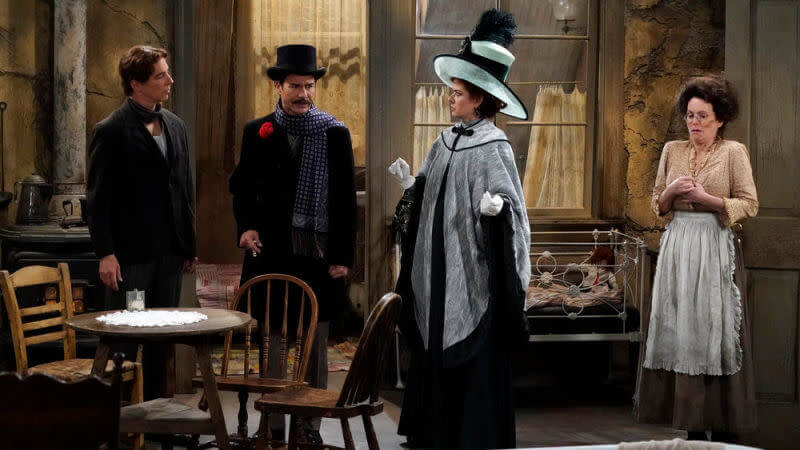
Creators Max Mutchnick and David Kohan produced Will & Grace for Warren Littlefield-era NBC, a network that was sitting pretty, particularly when it came to sitcoms, and could afford to take a chance on a show about a straight-woman/gay-man friendship (one based on Mutchnick’s own relationship with his best friend). Will and Grace were best friends since college, dated before Will came out of the closet, and have remained remarkably, often unhealthily, close. The tagline to the pre-premiere ad campaign was “They’re not a couple. They’re a couple of best friends,” so clearly, the idea from the beginning was that Will’s sexual orientation was going to be this show’s twist on the relationship-sitcom formula. [](Streaming on )
